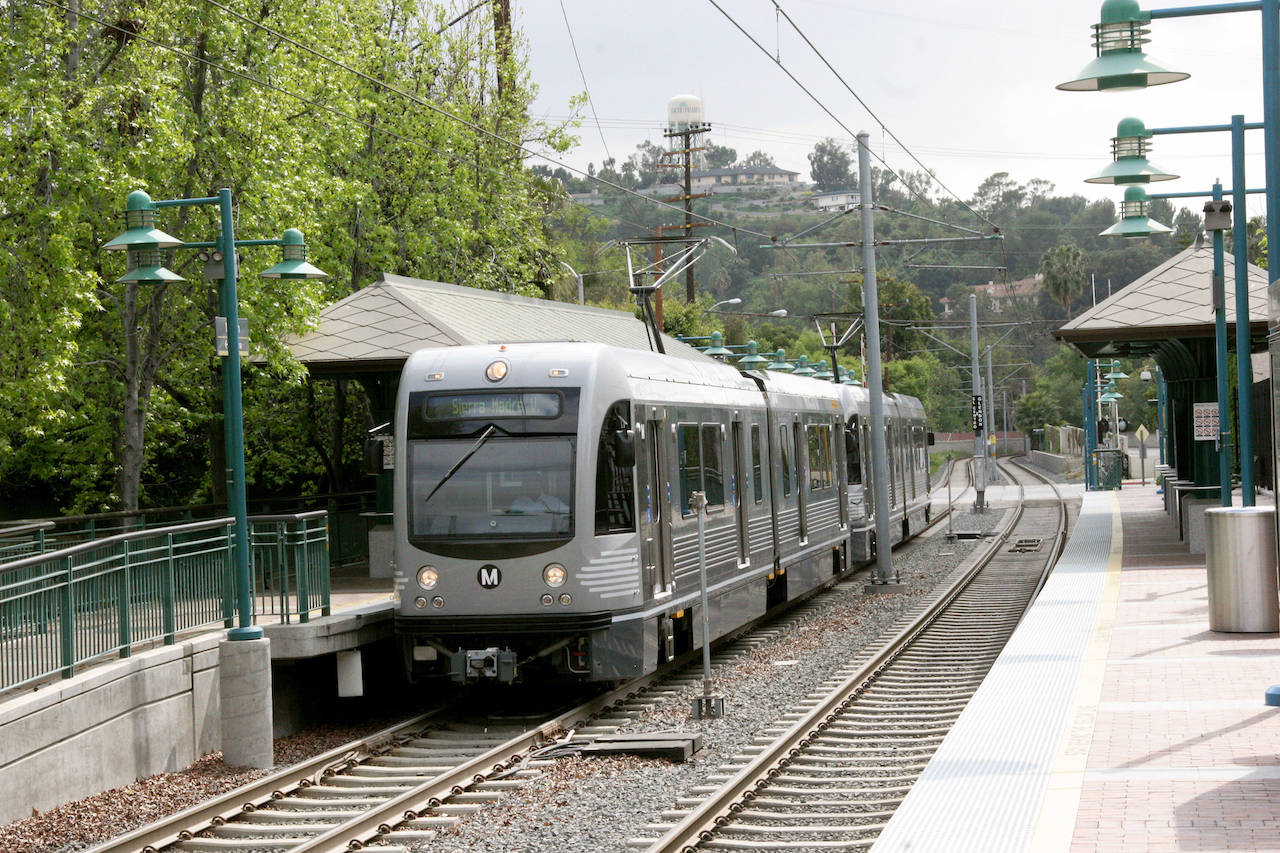February 07, 2023 Passenger
So-Cal Rail Renaissance
Written by David Peter Alan, Contributing Editor

Los Angeles Gold Line Breda LRVs arrive at the Mission (Meridian Ave.) station in South Pasadena. (Joseph M. Calisi Photography©, All Rights Reserved)
PASSENGER RAIL FOCUS, RAILWAY AGE FEBRUARY 2023 ISSUE: Whoever thought that Southern California, which decades ago ripped up much of its extensive passenger rail network, would become a rail transit mecca? Agencies like Los Angeles Metro Rail, NCTD, Metrolink and Amtrak are returning the region to its glory days.
On an unusually hot day at the end of March 2015, the Rail Users’ Network (RUN) held a conference in downtown Los Angeles. I moderated a panel, and as part of my remarks, said something like this: “When I first visited this city in 1979, Metrolink and Metro Rail did not exist yet. There were only buses, which seemed to take forever to go anywhere. If anybody had told me then that I would be speaking at a rail conference 36 years later in this city, talking about all the rail transit the area has offer and how it was making downtown popular again, I would have told them they were crazy!” ... Yet, not only the City of Angels, but also San Diego and the LOSSAN Corridor in between, have seen a dramatic rebirth of trains and local rail transit.
Once upon a time, the Pacific Electric system of interurban and streetcars was one of the biggest anywhere. At the end of
Who Framed Roger Rabbit? (1988), which was set in 1947, one of the characters remarked that L.A.’s transit was some of the best in the world. That might have been an exaggeration by then, but Pacific Electric’s red cars and the Los Angeles Railway’s yellow cars moved millions of Angelinos around the city and into the suburbs. The decline was under way, though, and the cars were all gone by 1963.
All the while, the environment declined, along with the transit. A popular joke heard on radio and TV in the 1950s went: Q: How do you know when it’s morning in Los Angeles? A: When you wake up and hear the roosters coughing! I personally found it somewhat difficult to breathe during my first visit there in 1979 but, clearly, the air is better now.
Then, a generation later, things began to change. The first light rail line opened between downtown and Long Beach, a town on the water south of the city. It was the start of Metro Rail, which has grown for the past three decades and has plans to keep growing for at least the next three. Mayors Antonio Villaraigosa (2005-13) and Eric Garcetti (2013-22) pushed hard for more rail transit and got it, despite a requirement in California that new tax-supported public expenditures must be approved by a two-thirds vote. Transit advocates and many Angelinos hope that the new mayor, Karen Bass, will continue the trend toward more rail transit. One of those expansions, the Downtown Connector, is under construction and scheduled to open later this year.
{snip}

